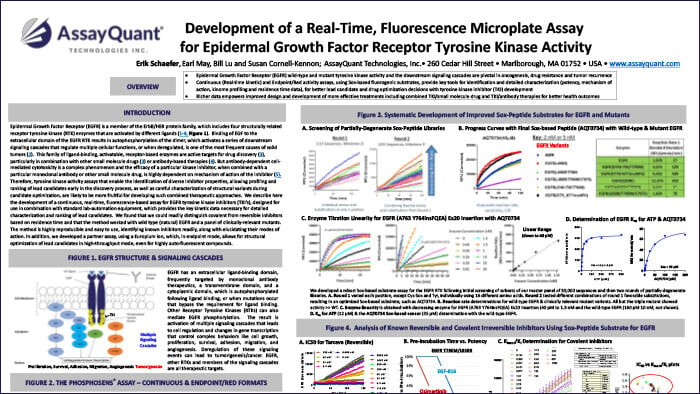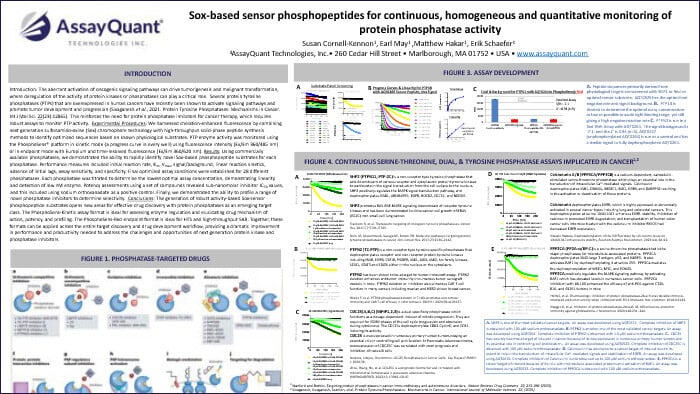PhosphoSens® Substrates, Assays & Enzyme Reagents for Kinase and Phosphatase Discovery
Quantify enzyme activity and inhibition in real-time with biochemical fluorescent assays and reagents that support workflows from basic biology to lead optimization across 500+ kinase and phosphatase targets.
Highly Quantitative Biochemical Fluorescent Assays and Active Recombinant Enzymes
Browse our portfolio of kinase and phosphatase activity assay solutions designed to improve drug discovery with precise, actionable kinetic insights that drive better decision making and success in kinase and phosphatase inhibitor development.
With validated assays for over 500 protein kinases, 35 protein phosphatases, a catalog of 1,100+ highly active enzymes and compound screening and profiling services, we have everything you need to accelerate discovery and development of the next generation of PKIs and PPIs.
500+ Kinase Assays
Comprehensive kinase assay portfolio offering real-time activity and inhibition measurement with multiple product configurations.
35+ Phosphatase Assays
Discover continuous, real-time phosphatase activity measurement with a wide selection of assays and customizable reagent options.
1,000+ Active Enzymes
High-purity recombinant kinases and phosphatases that seamlessly integrate for improved enzyme and inhibitor activity studies.
Cell Lysate Kinase Assays
Study endogenous kinase activity directly in cell or tissue lysates—no need for cell engineering or overexpression. These assays provide a continuous, real-time readout of phosphorylation in a physiologically relevant context.
Technical Research and Development Resources for AssayQuant's Enzyme Activity Assays

Development of a Real-Time, Fluorescence Microplate Assay for Epidermal Growth Factor Receptor (EGFR) Tyrosine Kinase Activity
Epidermal Growth Factor Receptor (EGFR) wild-type and mutant tyrosine kinase activity and the downstream signaling cascades are pivotal in oncogenesis, drug resistance, and tumor recurrence. Learn how our team developed a continuous, real-time, fluorescence-based assay for EGFR tyrosine kinase inhibitors (TKI’s).

Sox-based Sensor Phosphopeptides for Continuous, Homogeneous, and Quantitative Monitoring of Protein Phosphatase Activity
Protein phosphatases are critical drug targets for cancer therapy development with a need for robust assays that monitor phosphatase enzyme activity. Learn how our assays continuously monitor protein phosphatase activity.
Didn’t find what you were looking for?
Stay Informed
Want to hear the latest about our technology? Be among the first to learn about our latest products and services.